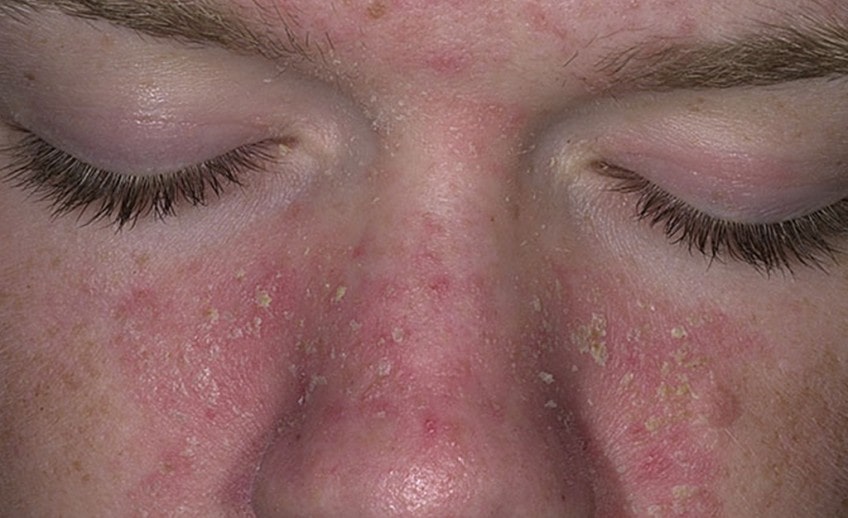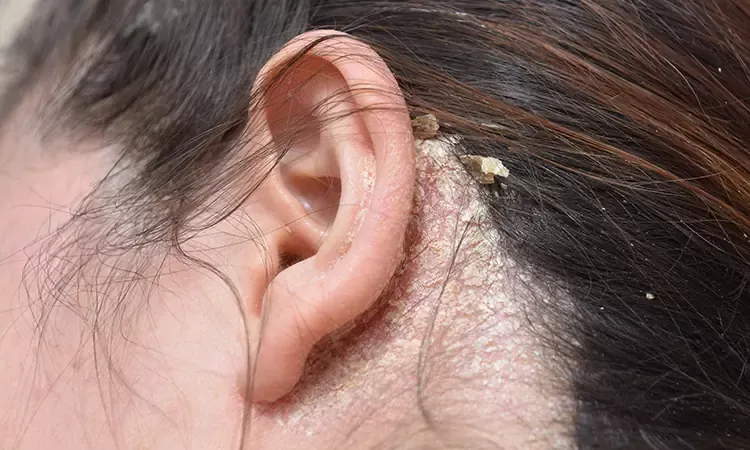How to rid of seborrheic dermatitis ?
SEBORRHEIC DERMATITIS :
Seborrheic dermatitis can occur in other areas of your body. These are areas with the most sebaceous (oil) gland activity: your upper back and chest, face/forehead, the creases at the base of your nose, behind your ears, navel (belly button), eyebrows, under your breasts and in the creases/bends of your arms, legs and groin.
Seborrheic dermatitis is a common, noncontagious, easy-to-manage skin condition. This type of dermatitis causes itchy red patches and greasy scales on your skin along with white or yellow crusty or powdery flakes on your scalp. Seborrheic dermatitis is a lifelong condition that appears, disappears with treatment, and flares up from time to time.
WHAT ARE THE SIGNS AND SYMPTOMS OF SEBORRHEIC DERMATITIS ?
- Itchy white flakes of skin on your scalp (dandruff). When scratched, the flakes come loose, mix in with your hair, or fall onto your neck and shoulders.
- Red scales on your skin.
- Crusty yellow scales on infants’ heads (cradle cap). Cradle cap shouldn’t itch, but scratching may cause additional inflammation in the area and break the skin, leading to bleeding or mild infections.
- Blepharitis (scaly redness on the edges of your eyelids).
- Pinkish plaques (thick skin) of scales on both sides of your face.
- Flaky patches on your chest and at your hairline that are shaped like a flower petal or a ring.
- Redness in the folds and creases of your genitals, armpits and beneath your breasts.
Researchers aren’t sure of the exact cause of seborrheic dermatitis. They think there may be many causes. Factors that are thought to play a role include:
- A type of yeast called Malassezia, which is present on everyone’s skin, but overgrow in some people.
- An increased level of androgens (a hormone).
- An increased level of skin lipids.
- An inflammatory reaction.
- Family history (dermatitis runs in the family).
Other factors that trigger or worsen seborrheic dermatitis include:
- Stress.
- Cold and dry climate.
- Oily skin.
- Using alcohol-based lotions.
- History of other skin disorders, including rosacea, psoriasis and acne.
Seborrheic Dermatitis usually doesn’t disappear on its own without treatment. Type of treatment depends on the area of the body that is affected and how severe your condition is.
The goal of treatment is to reduce the visible signs of seborrheic dermatitis and itching and redness. Treatment includes use of over-the-counter products and prescription products. Prescription pro
ducts include topical antifungals, calcineurin inhibitors and corticosteroids.
Scalp Treatment
Cradle cap (infants)
- Cradle cap usually clears up without treatment when the child is between eight and 12 months old. It may be treated daily with a mild baby shampoo.
- Massage or brush the scalp with a soft brush several times a day and after each shampoo. Be careful not to cause a break in the skin, which can lead to infection.
- If the problem continues, or the baby seems uncomfortable and scratches the scalp, contact your pediatrician or dermatologist. He or she may prescribe a prescription shampoo or lotion.
- Other areas of affected skin may be treated with a gentle steroid lotion.
Adolescents and adults:
For mild cases, look for over-the-counter dandruff shampoos that contain selenium, zinc pyrithione or coal tar. Shampoo with it twice a week or as directed on the label of the product. For long-term control, your healthcare provider may prescribe antifungal shampoos that contain ciclopirax or ketoconazole . These shampoos are used from daily to two or three times a week for several weeks until the dandruff has cleared, then once every week to two weeks to prevent flare-ups. Your healthcare provider will give you specific directions for use.
Face and Body
Treatments for seborrheic dermatitis of the face and body include topical antifungals, corticosteroids and calcineurin inhibitors.
Topical antifungals include ciclopirox, ketoconazole or sertaconazole. These products, available in creams, foams or gels, are usually applied to the affected areas twice daily for up to eight weeks and then as needed.
Topical corticosteroids include betamethasone valerate, desonide, fluocinolone or hydrocortisone. These products come in creams, lotions, foams, gels, ointments, oil or solution. They are taken once or twice a day. Your healthcare provider might prescribe these products if antifungal products aren’t successful in clearing your seborrheic dermatitis or for treating flare-ups. Corticosteroids can cause a thinning of your skin and should not be used continuously for weeks and months at a time without a break. Topical calcineurin inhibitors are an alternative to corticosteroids. These products include pimecrolimus cream or tacrolimus ointment They are applied to the affected area twice daily. If your case is severe, your healthcare provider may prescribe an oral (pill) antifungal agent or phototherapy .



Comments
Post a Comment